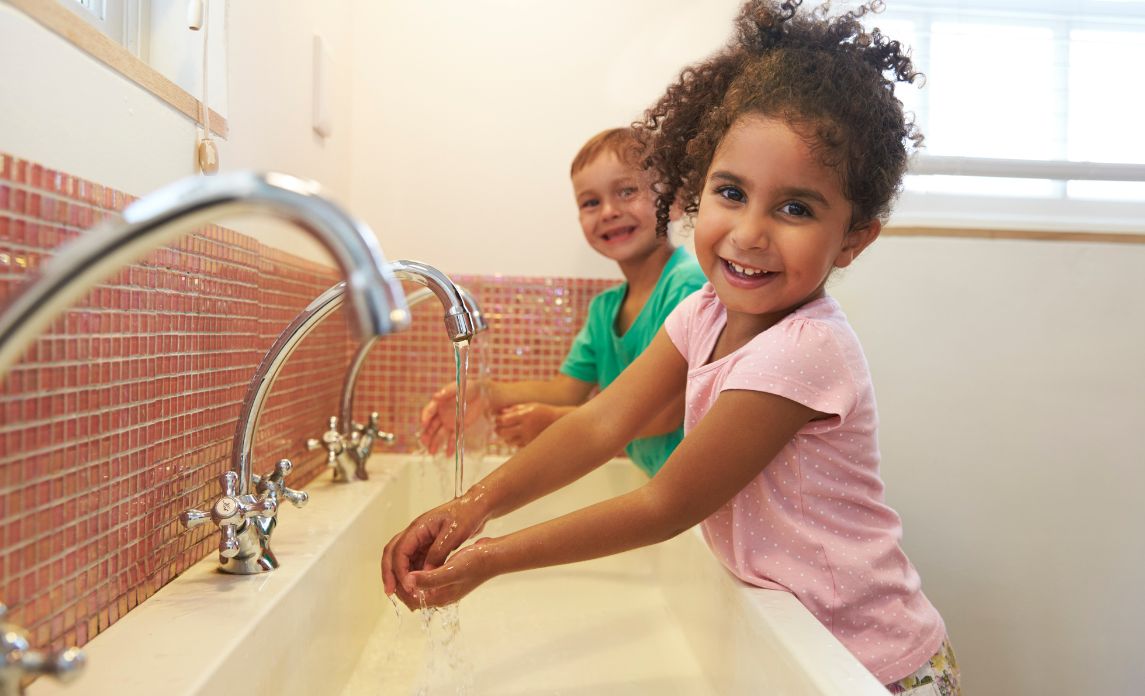Ensuring the cleanliness and hygiene of early childhood centres is of utmost importance. These centres serve as nurturing environments where children learn, play, and interact with one another. By implementing effective cleaning practices, you can create a safe and healthy space that minimises the spread of germs and ensures the well-being of young children.
In this article, we will explore essential cleaning tips specifically tailored for early childhood centres.
Hire Professional Cleaners
One of the easiest things to do to ensure the cleanliness of early childhood centres—or indeed, any establishment at all—is to hire professional cleaners.
Having professional cleaning services in place offers numerous benefits. For one, experts possess the knowledge and experience required to maintain a clean and sanitised environment. They use specialised techniques, equipment, and disinfectants to ensure thorough cleaning, providing peace of mind to both staff and parents.
Encourage Frequent Hand-Washing
While washing your hands properly isn’t exactly a cleaning tip, promoting proper hand hygiene among children is crucial for preventing the spread of germs.
Encourage regular hand-washing throughout the day, especially before meals, after using the restroom, and after outdoor play. Teach children the correct hand-washing technique, as well, including using soap, rubbing all areas of the hands, rinsing thoroughly, and drying using paper towels.
Clean Everything Touched or Used by Children
There are many high-touch surfaces in early childhood centres that require frequent cleaning to prevent the accumulation and transmission of germs. Make it a habit to wipe down and disinfect surfaces such as doorknobs, light switches, tables, chairs, and classroom materials regularly.
You should also pay special attention to shared items like art supplies, learning tools, and educational toys, ensuring they are sanitised after each use.
Wash Toys Frequently
Speaking of toys, these often come into close contact with children and can harbour germs. Thus, it’s best to establish a routine for washing and disinfecting toys to maintain a clean and safe play environment.
For plastic toys, you can clean them with warm soapy water. Then, for disinfecting, either immerse them in a bleach solution or use disinfectant wipes. Let the toys air dry before letting the children play with them again.
For soft toys like plushies and cloth books, follow the manufacturer’s instructions for proper cleaning to keep them in good shape and make sure that they are thoroughly dry before storage or reuse. This can help prevent mould and bacteria from growing on the moist fabric.
Have Separate Containers for Used and Clean Items
To prevent children from touching or using dirty learning materials or toys, provide separate containers and label them accordingly. Then, teach the children to put the items they’ve used in the correct container and only use or play with those that are clean.
Aside from keeping children safe and healthy, this method also teaches children responsibility and the value of following rules.
Use Hypoallergenic Cleaning Products
Given the sensitivity of children’s skin and respiratory systems, it’s advisable to opt for hypoallergenic cleaning products. These products are free from harsh chemicals and allergens, reducing the risk of allergic reactions and respiratory irritations among children and staff. Read labels carefully and choose products specifically designed for use in early childhood settings.
Have Cleaning Materials Ready for Food Spills
Children are naturally curious and, most of the time, filled with rambunctious energy. Thus, food spills are common occurrences in early childhood centres.
Be prepared to wipe up messes by keeping appropriate cleaning materials readily available. Stock up on absorbent towels, non-toxic cleaning solutions, and disinfectants suitable for cleaning food particles and liquids. For disinfectants, make sure that they are food grade.
By acting promptly, you can prevent spills from becoming accident risks and potential breeding grounds for bacteria.
Block Off Areas That Need Cleaning
As mentioned, children are curious creatures. If someone is doing something interesting or strange, you can expect little hangers-on to watch or even attempt to copy certain actions. While this can be adorable at times, it can also get frustrating and dangerous when you’re trying to clean something up.
To prevent nasty accidents and also to expedite your cleaning time, block off areas where you need to clean. Also, teach the children what signs like “Keep Out”, “Slippery When Wet”, and similar signs mean.
Last but certainly not least, make sure that you’re using the correct cleaning implements and protective gear. Wear rubber gloves, rubber boots, safety goggles, and masks whenever necessary to ensure your safety when cleaning. Doing this also shows children the importance of safety measures when doing certain tasks.
Maintaining a clean and sanitised environment in early childhood centres is essential for the well-being of children. However, it can also be quite a challenge because of the inquisitive and energetic nature of children.
By following these cleaning tips, you can create a safe and healthy space where children can learn and grow without unnecessary risks to their health. Let’s all prioritise cleanliness in early childhood centres to provide a nurturing environment for our little ones!


